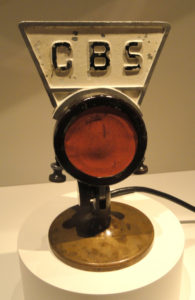 “Taking the chance of making a complete fool of himself—and, sometimes, doing so—is the first demand that is made upon any real critic: he must stick his neck out just as the artist does, if he is to be of any real use to art.”
“Taking the chance of making a complete fool of himself—and, sometimes, doing so—is the first demand that is made upon any real critic: he must stick his neck out just as the artist does, if he is to be of any real use to art.”
Randall Jarrell, “The Age of Criticism”

 In today’s Wall Street Journal “Sightings” column I discuss the growing progressive backlash against Hamilton. Here’s an excerpt.
In today’s Wall Street Journal “Sightings” column I discuss the growing progressive backlash against Hamilton. Here’s an excerpt. For my part, I think “Hamilton” is best understood as an exercise in historical myth-making, the same kind of thing that John Ford was doing when he made such films as “My Darling Clementine,” “They Were Expendable” and “Young Mr. Lincoln.” Ford’s purpose was to pass American history through the prism of popular art, in the process creating semi-fictional American heroes whose stirring lives would inspire young viewers to do great deeds of their own. Of course he knew perfectly well that his cinematic tales of historical derring-do were far from literally true, but he also understood the pivotal role played by idealism in the formation of character. That’s what the newspaper editor in Ford’s “The Man Who Shot Liberty Valance” meant when he told Jimmy Stewart’s character, “This is the West, sir. When the legend becomes fact, print the legend.” And that’s what Mr. Miranda has done in “Hamilton”: He’s created a modern-day legend of his very own…
For my part, I think “Hamilton” is best understood as an exercise in historical myth-making, the same kind of thing that John Ford was doing when he made such films as “My Darling Clementine,” “They Were Expendable” and “Young Mr. Lincoln.” Ford’s purpose was to pass American history through the prism of popular art, in the process creating semi-fictional American heroes whose stirring lives would inspire young viewers to do great deeds of their own. Of course he knew perfectly well that his cinematic tales of historical derring-do were far from literally true, but he also understood the pivotal role played by idealism in the formation of character. That’s what the newspaper editor in Ford’s “The Man Who Shot Liberty Valance” meant when he told Jimmy Stewart’s character, “This is the West, sir. When the legend becomes fact, print the legend.” And that’s what Mr. Miranda has done in “Hamilton”: He’s created a modern-day legend of his very own… IN CHICAGO:
IN CHICAGO:
 I flew up from Orlando to New York on Monday morning after a lousy night’s sleep, and I fell into bed as soon as I got home for a much-needed nap. I checked Twitter as soon as I woke up to see what was going on, and found my feed full of Pulitzer-related tweets. One of them was a public message from CBS Radio News that read as follows: “Hi Terry. We would love to speak with you, if you have a moment. Please give us a call. Thank you!” A phone number followed, which surprised me. (I wonder how many people called it while I was still napping.)
I flew up from Orlando to New York on Monday morning after a lousy night’s sleep, and I fell into bed as soon as I got home for a much-needed nap. I checked Twitter as soon as I woke up to see what was going on, and found my feed full of Pulitzer-related tweets. One of them was a public message from CBS Radio News that read as follows: “Hi Terry. We would love to speak with you, if you have a moment. Please give us a call. Thank you!” A phone number followed, which surprised me. (I wonder how many people called it while I was still napping.)